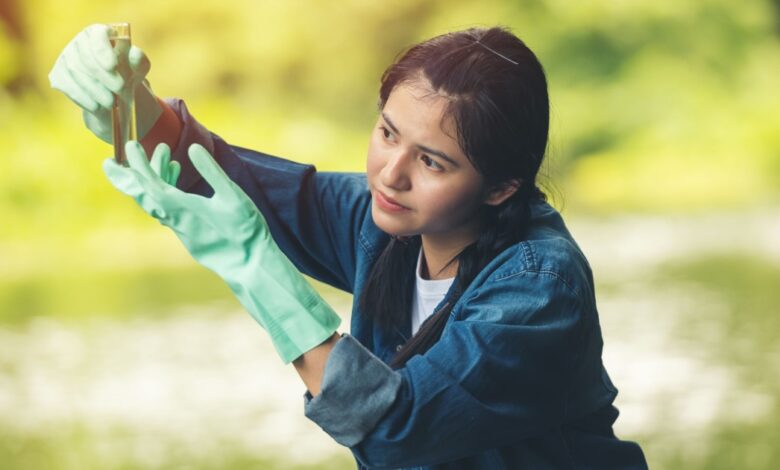UNEP Chief Scientist on why we need more women and girls in science

[ad_1]
11 February is the International Day of Women and Girls in Science, which recognises the often underappreciated role women and girls play in science and advocates for their full and equal access and participation.
Gender equality and the empowerment of women and girls is essential to fostering reliable, representative and meaningful science. These are at the heart of the United Nation’s 2030 Agenda for Sustainable Development and are critical to the United Nations Environment Programme’s (UNEP) Medium Term Strategy.
Yet the gender gap in science persists. Although women account for 33 per cent of researchers, only 12 per cent of national science academies’ members are women, according to UNESCO’s Science Report 2021. They tend to have shorter, lower-paying careers, and their work is underrepresented in high-profile journals.
We spoke with Andrea Hinwood, Chief Scientist at UNEP, about her role, the importance of science-based approaches in tackling environmental issues, and how to engage women and girls in science.
.png)
How would you describe your first year as UNEP’s Chief Scientist?
Andrea Hinwood: First of all, it’s humbling to have this role with UNEP. I ensure that the science UNEP uses is robust, that we’re credible, authoritative and, of course, that the science is used to generate change in terms of improving environmental outcomes.
I’ve been helping to look at the impact we are having across the very broad number of issues we deal with. Of course, the scientific method is very useful in this analysis. We’re developing key performance indicators, and one of the recommendations is providing a seat at the table for women as a key element to support the science-policy interface.
We’ve also introduced a new automated system looking at how we can diversify our products to meet different audience needs.
UNEP: How important is it that UNEP is involved in this broad number of issues?
AH: UNEP has to be engaged across the array of environmental issues. I believe that we can prioritize and focus our effort on where we’re going to drive the most change in a way that considers the role of women and girls, social inequalities, poverty and other issues.
You can’t fix the environment if you haven’t addressed underlying inequality.
If you start to resolve some of the environmental dimensions – food security and water security – you might actually reduce conflict. Then you might see some shifts where people can engage more meaningfully about changing the environment.
We have sister agencies that deal with all of those issues. UNEP will never be able to do these on its own. It has to partner across the UN system to effect change.
How critical is science in combating environmental misinformation?
AH: It is more important than ever. It is absolutely fundamental.
The challenge is that to combat environment-related misinformation; you have to make your information available and accessible to anyone all over the globe. One of the things we want to do as an organization is to make our science open and accessible – and therefore gain trust. You don’t gain trust by telling someone, “Trust me, I’m a scientist.”
You’ve got to keep promoting that science so you become a trusted voice and you’re able to show that evidence.
You have to broaden the diversity of the types of science, embrace different knowledge systems and ensure you’ve got geographic and gender diversity within your authorship, the people who review and the people who contribute to panels. I think UNEP takes that pretty seriously.
How can science generally engage with women and girls in a meaningful way?
AH: We need to engage girls earlier in their education. We need to provide them with opportunities and talk about what’s possible, particularly in developing countries. And we need to engage women and girls where they are.
Often, people don’t even realize that they’re ‘doing science’. Having worked for a regulator, I used to hear people say, “We’re not scientists,” because they didn’t have a degree. But they were approaching problems using the scientific method: what’s the situation, what did they observe, what information did they collect, what conclusions did they draw, and how did they respond to it?
[ad_2]
Read More



